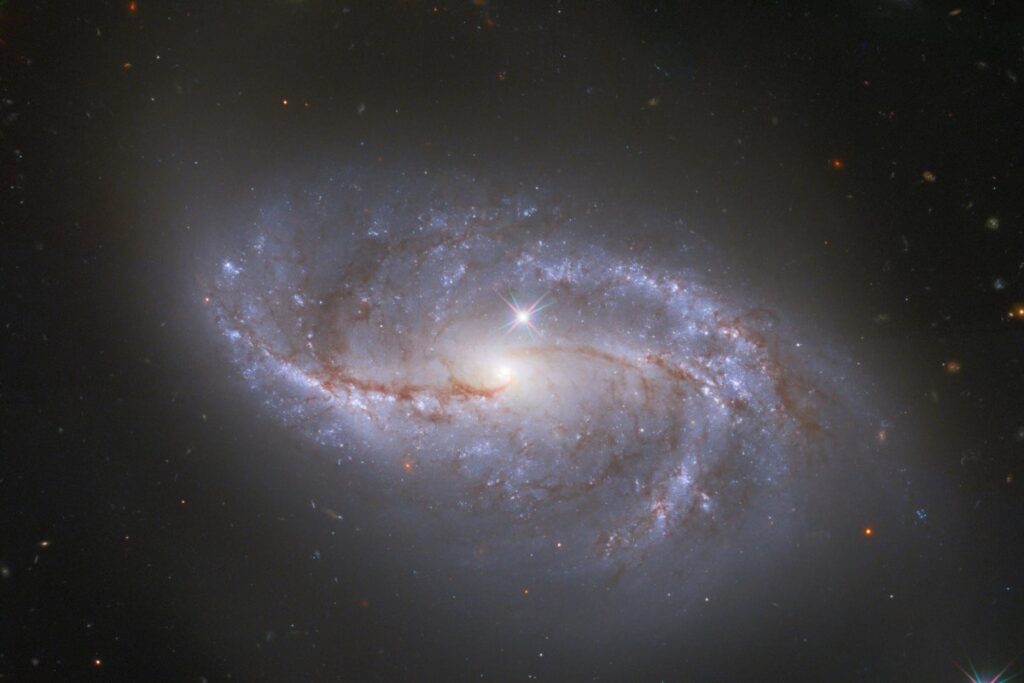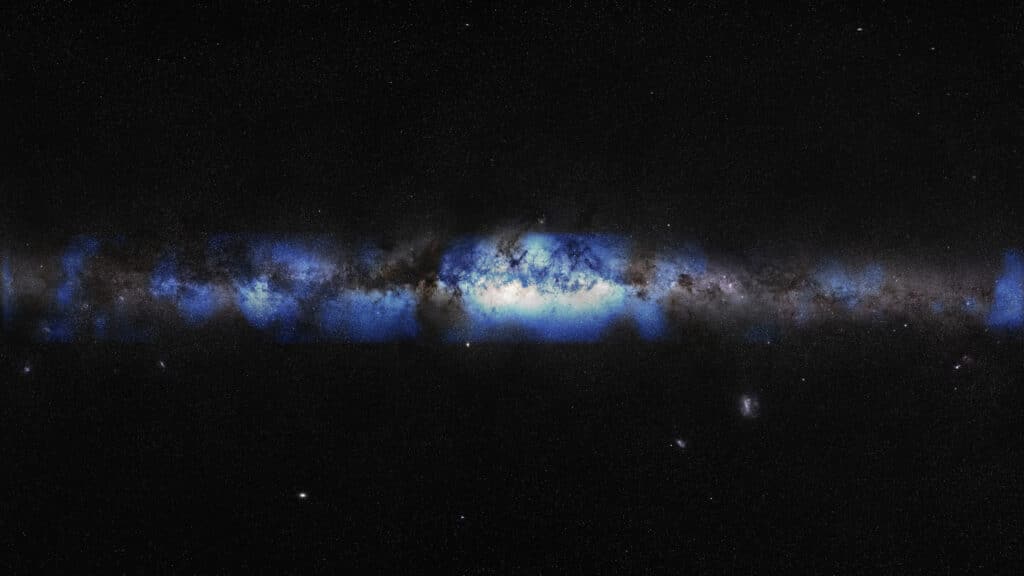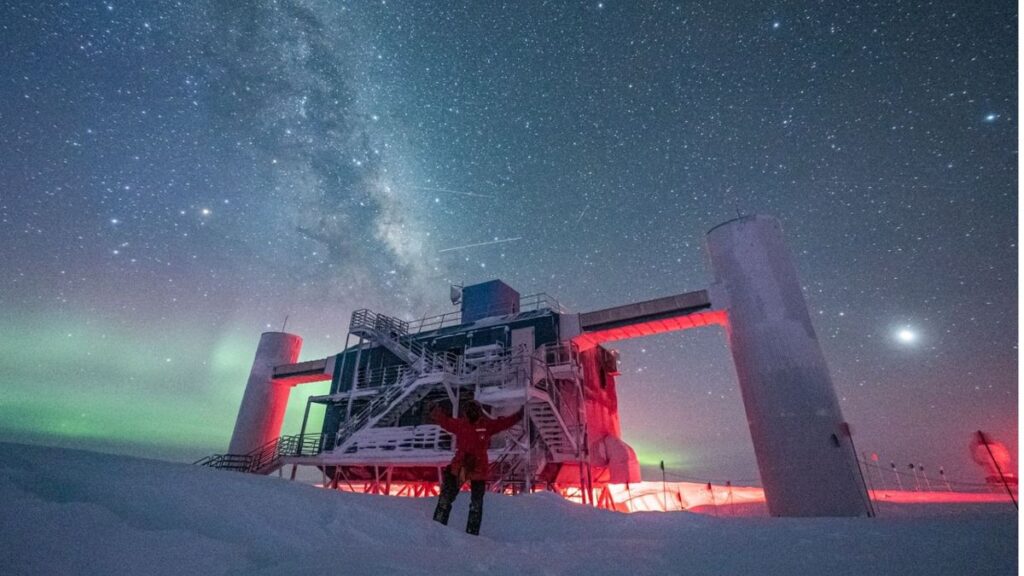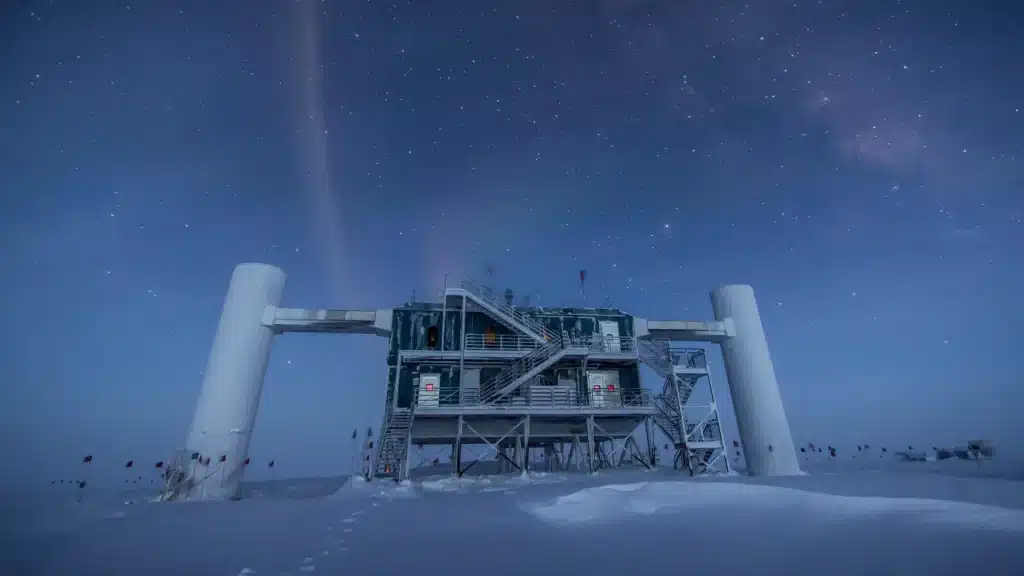In a groundbreaking achievement, astronomers have successfully captured an image of the Milky Way galaxy that reveals the presence of high-energy neutrinos originating from within our galaxy. Neutrinos, often referred to as cosmic “ghost particles,” were detected by a telescope located deep within the ice of Antarctica.
This significant development marks an important milestone in astrophysics as it introduces a promising avenue for further research. The findings, published in the journal Science, detail the utilization of the IceCube Neutrino Observatory situated at the Amundsen-Scott South Pole Station by scientists.
The IceCube Neutrino Observatory, located at the Amundsen-Scott South Pole Station, is a remarkable scientific endeavor that operates within an immense volume of ice. To put its scale into perspective, this groundbreaking neutrino detector is embedded within a gigaton, equivalent to one billion tons, of ice. This makes IceCube the first-ever gigaton neutrino detector constructed.
Why are They Calling Neutrinos “Ghost Particles?”
Neutrinos, the name derived from their diminutive nature and low mass, are minuscule cosmic particles characterized by their vaporous nature. These high-energy particles possess the extraordinary ability to traverse various types of matter and environments, including stars, planets, and entire galaxies, without undergoing any significant alterations.
Although scientists have been aware of high-energy neutrinos originating from galaxies outside of the Milky Way, there has been a longstanding belief that our own galaxy also serves as a source. Until now, astronomers have primarily studied our galaxy through the analysis of electromagnetic radiation, such as visible light or radio waves.
However, this new perspective unveils a distinct approach, as it captures the essence of our galaxy through the observation of particles of matter rather than energy.
Experts Take on the Findings
“I remember saying, ‘At this point in human history, we’re the first ones to see our galaxy in anything other than light,” commented Naoko Kurahashi Neilson, who’s working as an associate professor at Drexel University in Physics Department.
During their investigation, the research team directed their attention to the plane of the Milky Way, a region of the galaxy characterized by its high density and located along the equator of the Milky Way. To conduct their study, scientists meticulously analyzed a decade’s worth of data collected by the IceCube Neutrino Observatory, encompassing a remarkable dataset of 60,000 neutrino detections.
This is a substantial increase compared to previous scans, providing a more comprehensive understanding of these elusive particles. The results of the analysis indicate that the detected neutrinos originate from within our galaxy. However, due to the current limitations of the IceCube observatory, scientists have not been able to precisely identify the specific sources of these neutrinos.
While the findings offer valuable insights into the presence of neutrinos in our galaxy, further advancements in sensitivity and detection capabilities will be necessary to pinpoint their exact origins. Nonetheless, this research represents a significant step forward in our mission to comprehend the mysteries of the Milky Way.




